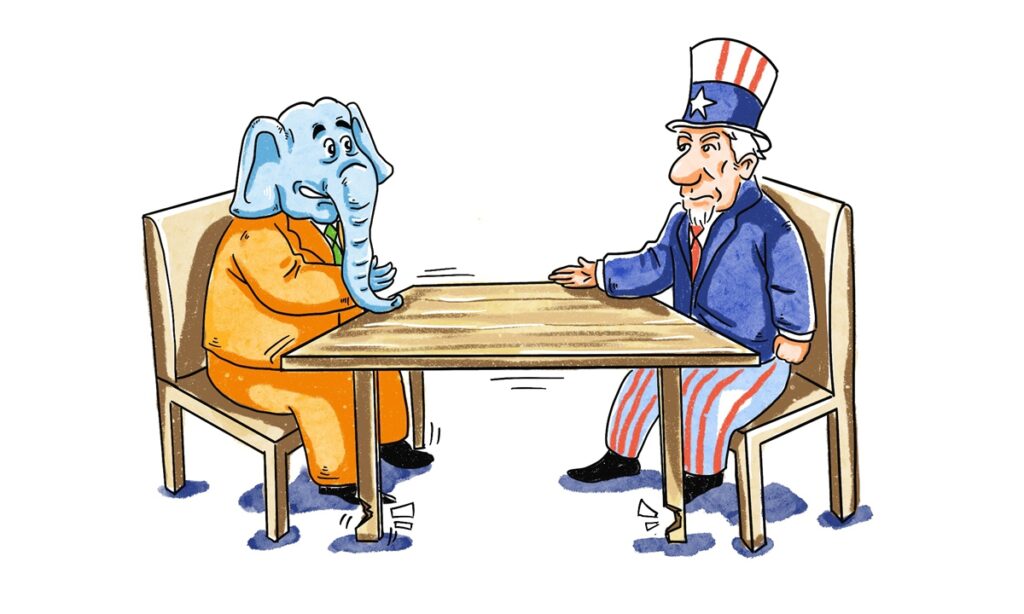Among India’s major trading partners, China and the US have been taking turns to register as the largest trading partner of the South Asian country. The latest data showed that the US ranked first again on the list.
“During January to September, two-way trade between India and the US jumped 50 percent to $28 billion. A comparatively slower 46 percent rise with China saw bilateral trade increase to $25.3 billion,” The Times of India reported on Saturday, citing official data.
In line with its intention to counter China, the US has stepped up efforts to lure India into its small clique; while New Delhi has shown growing expectations for its economic and trade ties with Washington. However, the expectation may be short-lived.
With strengthening diplomatic ties, there remain economic and trade differences between India and the US that are hard to bridge. In March 2018, the US imposed import duties of 25 percent and 10 percent on Indian steel and aluminum products, and a year later, the Trump administration terminated India’s designation as beneficiary developing countries under the Generalized System of Preferences (GSP) program because it could “no longer comply with the statutory eligibility criteria.”
After conducting an eligibility review of India’s compliance with the GSP market access criterion in April 2018, the Office of the US Trade Representative said that India has implemented a wide array of trade barriers that created serious negative effects on US commerce.
Though the Biden administration has adopted a different approach trying to build up a small group to advance its hegemonic agenda, the “America First” principle has not changed. In August, India’s Commerce and Industry Minister Piyush Goyal said “hopes of an India-US trade pact are off the table for now, with the Joe Biden administration conveying to India that it is not interested in a free trade agreement.”
As for the Indian side, though it has repeatedly expressed its intention to attract more foreign investment, it has upheld its reputation in the region for holding the most unfriendly attitudes toward foreign capital; not to mention its insufficient infrastructure, unsatisfying policy environment, inadequate of skilled work forces and other shortages.
Ideal as it is, forming a stronger economic relation with the US so as to boost Indian economy or promote its “Make in India” agenda is not anything that could happen in the near future. A growing trade between the US and India may be a positive sign for New Delhi, but disputes will follow along the changing trading relation.
In the meantime, India or any other Asian economy’s growing trade volume with the US, in fact, reflects an increasing integration of the regional industrial chain. The Asian region has set up a close-knit value chain with China remaining as the most important manufacturing hub, stabilizing and boosting the growth of the region.
Replacing China is not a realistic proposal for India, instead, India itself is highly dependent on China for trade. In 2020, China recorded the largest trading partner of India amid the COVID-19 pandemic, exporting $17.8 billion worth of electrical machinery and equipment to the South Asian country.
China’s strong manufacturing capacity has been tested during the pandemic crisis and it is ramping up efforts to upgrade its industrial structure. It is cooperation with China that can benefit its domestic economy, rather than provoking political confrontations.



